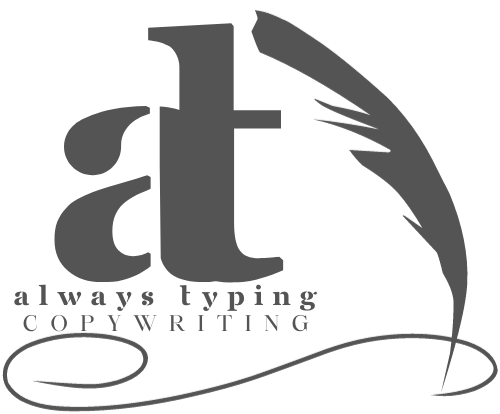Copywriting is often perceived as a blend of art and science, with its true magic lying in the power to persuade, engage, and convert. It’s not just about crafting words; it’s about understanding the psychology of your audience and strategically leveraging words to influence their decisions. In this article, we’ll embark on a journey into the world of copywriting techniques, exploring the art of persuasion and the tools that make it happen. The Psychology of Persuasion At the core of persuasive copywriting is the understanding of human psychology. Every word, sentence, and paragraph you write should be strategically crafted to tap into psychological triggers that influence your readers. Let’s delve into some key psychological principles: A. The Psychological Triggers Reciprocity: The principle of reciprocity suggests that when we receive something, we feel obliged to give something in return. In copywriting, this can be applied by offering value to your audience. Providing free resources, like ebooks or webinars, can create a sense of reciprocity. Scarcity: People are naturally drawn to things that are scarce. If a product or service is perceived as limited or in high demand, it becomes more desirable. Effective copy can convey a sense of urgency by highlighting limited-time offers or low stock levels. Authority: The authority principle states that people are more likely to follow the lead of credible, knowledgeable figures. In copywriting, demonstrating authority through expert endorsements, certifications, or industry recognition can boost trust and persuasion. B. The Role of Cognitive Biases Confirmation Bias: This bias leads us to seek information that confirms our existing beliefs. In copywriting, you can use this by aligning your messaging with the audience’s preconceptions and values. Anchoring Bias: Anchoring occurs when people rely heavily on the first piece of information they encounter (the “anchor”) when making decisions. Use anchoring in pricing by presenting the higher-priced option first and making the lower-priced option seem like a better deal. C. Emotional Appeals in Persuasion Emotions play a significant role in persuasion. To create compelling copy, it’s essential to tap into the emotional triggers that resonate with your audience. Some common emotional appeals include: Fear: Addressing a pain point and offering a solution can generate a sense of urgency and need. Happiness: Positive and uplifting messaging can create a connection with the audience, leading to a desire for your product or service. Empathy: Understanding and empathizing with your audience’s challenges can foster a sense of connection and trust. Capturing the audience’s attention is a critical first step. Headlines are your opportunity to make a compelling first impression and draw readers into your content. Effective headlines are attention-grabbing, concise, and relevant. Effective Headlines: The First Impression Your headline should convey the essence of your content and promise value to the reader. It’s the first point of contact, and if it doesn’t pique interest, readers may never get to the body of your copy. Techniques for Crafting Compelling Headlines Use Numbers: People love lists and quantifiable information. Headlines like “7 Proven Strategies for…” or “10 Tips to…” are highly effective. Ask Questions: Asking a thought-provoking question in your headline can engage readers and prompt them to seek answers in your copy. Trigger Emotions: Emotional headlines can be particularly compelling. For example, “Discover the Secrets to Unstoppable Confidence” taps into the emotion of confidence. Be Specific: Specificity adds credibility. Instead of “Improve Your Writing,” try “Boost Your Writing Skills in 30 Days.” Create a Sense of Urgency: Headlines that create FOMO (Fear of Missing Out) can be very persuasive. “Last Chance to Save 50%!” is a classic example. The Art of Storytelling in Copywriting One of the most powerful tools in a copywriter’s arsenal is storytelling. Stories have an extraordinary ability to engage, connect, and persuade. In the world of copy, storytelling isn’t limited to narratives but extends to creating a compelling story around your product or service. A. Why Storytelling Works Stories are memorable. They evoke emotions, create connections, and make your message relatable. When you tell a story, you’re not just conveying information; you’re engaging your audience on a deeper level. In a world inundated with information, stories stand out. B. Elements of a Persuasive Story Characters: Every story has characters. In your copy, the characters can be your customers, your brand, or even yourself. Readers should connect with these characters. Conflict: Conflict creates tension, and tension keeps readers engaged. In your copy, the conflict might be the challenges your customers face. Resolution: A story isn’t complete without a resolution. In your copy, this could be the transformation your product or service offers. C. Implementing Storytelling in Copy Customer Testimonials: Share stories of satisfied customers who’ve achieved success with your product or service. Origin Stories: Tell the story of how your brand was founded, its mission, and its journey. Case Studies: Walk readers through a real-world scenario where your product or service solved a problem. The Power of Social Proof People are inherently social creatures, and they often look to others for cues on how to act. This is where the power of social proof comes into play in persuasive copywriting. A. Leveraging Social Proof to Build Trust Social proof encompasses various forms, such as customer reviews, testimonials, endorsements from influencers, or user-generated content. It creates a sense of trust by showing that others have had positive experiences with your product or service. B. Types of Social Proof Testimonials: Quotes from satisfied customers can be particularly persuasive. Include their names and, if possible, photos for authenticity. Ratings and Reviews: Displaying star ratings and snippets of reviews can make a significant impact on purchasing decisions. Case Studies: Detailed case studies that showcase how your product or service solved real-world problems can be compelling. C. Incorporating Social Proof in Copy Integrate social proof strategically into your copy. For example, you might incorporate testimonials directly into a sales page or mention awards and accolades your product has received. Scarcity and Urgency: Persuading with Time Creating a sense of scarcity and urgency is a classic technique in persuasive copywriting.
SEO Copywriting: The Ultimate Guide to Rank High and Convert
In the vast digital landscape, visibility is everything. It’s not enough to craft engaging content; it needs to be seen. SEO copywriting is the art of creating content that not only captivates your audience but also ranks high in search engine results. It’s the ultimate blend of creativity and strategy, where words become the bridge between your brand and your audience. In this comprehensive guide, we’ll dive deep into the world of SEO copywriting. We’ll explore the intricacies of optimizing your content for search engines while keeping it engaging for readers. By the end, you’ll have the knowledge and techniques to craft content that not only ranks well but also persuades and converts. Let’s embark on this journey to conquer the digital realm. The Symbiosis of Content and SEO SEO (Search Engine Optimization) and content are like two sides of the same coin. SEO guides you to create content that search engines love, while content serves as the vehicle for delivering your message to your audience. The perfect marriage of the two is what ensures your content ranks high and gets noticed. The Role of Keywords Keywords are the compass of SEO copywriting. These are the words and phrases that users type into search engines to find what they’re looking for. By skillfully incorporating these keywords into your content, you can guide search engines to understand what your content is about. The SEO Copywriting Process SEO copywriting is a structured process that begins with keyword research and extends to content creation, optimization, and monitoring. It’s a dynamic process that necessitates an understanding of the nuances of search engines and user behavior. Keyword Research: The Foundation of SEO Copywriting A. Finding the Right Keywords B. Long-Tail Keywords: Your Secret Weapon C. Tools for Keyword Research A. Finding the Right Keywords The first step in SEO copywriting is identifying the right keywords. These are the search terms that are relevant to your content and frequently used by your target audience. Various tools are available to help you find these keywords, such as Google’s Keyword Planner or third-party tools like SEMrush or Ahrefs. B. Long-Tail Keywords: Your Secret Weapon Long-tail keywords are longer and more specific keyword phrases. They are the gems of SEO copywriting because they cater to users who are closer to the point of making a purchase. For instance, “best digital camera for travel photography” is a long-tail keyword. C. Tools for Keyword Research In addition to Google’s Keyword Planner, there are numerous tools available that can simplify and enhance your keyword research. Some popular choices include SEMrush, Ahrefs, Moz, and Ubersuggest. These tools provide insights into keyword search volume, competition, and related keyword suggestions. On-Page SEO: Optimizing Your Content Crafting SEO-Friendly Titles Your content’s title is its first point of contact with search engines and readers. A well-crafted title should include the primary keyword and entice readers to click. It sets the stage for what your content is about. Structuring Your Content Content structure plays a crucial role in SEO. Use headings (H1, H2, H3, etc.) to create a hierarchy and make your content scannable. This structure helps both readers and search engines understand the content’s organization. The Power of Meta Descriptions Meta descriptions are the brief snippets displayed on search engine results pages (SERPs) below the title. While they don’t directly influence rankings, they can significantly impact click-through rates. Craft compelling meta descriptions that encourage users to click on your link. Images, Alt Text, and SEO Images enhance content, but they should be optimized for SEO. Use descriptive file names and provide informative alt text for images. Search engines use this information to understand the content of your images. Internal and External Links Internal links connect your content to other pages on your website, providing a logical flow and enhancing user experience. External links to authoritative sources can also enhance your content’s credibility. Creating Engaging Content While SEO copywriting is often associated with technical strategies, the essence of storytelling remains crucial. Engaging stories captivate readers, making your content memorable and shareable. Stories can also include keywords naturally, aligning with SEO objectives. Captivating Introductions The opening of your content is your chance to grab the reader’s attention. An engaging introduction sets the tone for the rest of the piece. It should hint at the value your content provides and encourage readers to continue. Maintaining Readability While keywords are essential, readability is paramount. Use short paragraphs, bullet points, and subheadings to break up content. Make sure your content flows smoothly, and that your audience can easily understand and follow it. Balancing Keywords and Quality Keyword optimization is crucial, but never sacrifice content quality for keyword density. Keyword stuffing (excessive use of keywords) can harm your rankings and turn readers away. Strive for a natural balance between optimization and high-quality content. The Importance of User Experience (UX) Mobile Optimization In an age where mobile usage dominates, optimizing for mobile is no longer an option—it’s a necessity. Ensure that your content displays well on mobile devices, and that it loads quickly. Page Load Speed Speed is a critical factor in user experience and SEO. Slow-loading pages can lead to higher bounce rates and lower rankings. Optimize images and reduce unnecessary code to improve page load speed. User-Friendly Navigation A user-friendly website navigation ensures that visitors can find what they’re looking for with ease. Logical menu structures and intuitive navigation contribute to a positive user experience. Monitoring and Fine-Tuning Your SEO Strategy The Role of Analytics Analytics tools like Google Analytics provide valuable insights into your website’s performance. You can track website traffic, user behavior, and the effectiveness of your content. Regularly review these analytics to understand what’s working and where improvements are needed. Periodic Content Audits Conduct content audits to assess the performance of your existing content. Identify pieces that need updating or refreshing. Outdated content can negatively impact your SEO efforts. Staying Current with SEO Trends The SEO landscape is constantly evolving. Stay up-to-date with the latest trends and algorithm changes from search engines like Google.
Storytelling in Copy: The Art of Captivating Your Audience
Storytelling is a timeless tradition, a universal language that transcends culture, age, and background. It’s the magic of weaving words into narratives that evoke emotions, capture imaginations, and leave lasting impressions. But storytelling isn’t confined to the pages of novels or the frames of movies; it has found a prominent place in the world of copywriting. In this comprehensive guide, we’ll delve into the impact of storytelling in copy and provide practical techniques for captivating your audience. The Power of Storytelling in Copywriting Stories have an incredible capacity to evoke emotions. They create a bridge between the content and the reader, making the message not just digestible but memorable. Emotions can lead to connections, and connections lead to action. Stories are relatable because they often mirror real-life experiences. When your audience can relate to a story, they become more engaged and invested in your message. This engagement is the first step towards conversion. In a sea of content, storytelling sets you apart. A well-crafted story is unique to your brand, your message, and your audience. It’s the distinctiveness that captures attention. Stories as Emotional Bridges Relatability and Engagement Differentiation and Uniqueness Techniques for Weaving Stories into Your Content A. Start with a Hook The opening of your content is the hook, the element that draws readers in. Use a compelling or intriguing story-related statement to pique their interest. B. Know Your Audience Understanding your audience is fundamental to effective storytelling. Tailor your stories to resonate with their experiences, values, and aspirations. C. Keep It Relevant Stories should always align with your message and purpose. A random or unrelated story can confuse readers and dilute your message. D. The Hero’s Journey One of the most powerful story structures is the hero’s journey. It involves a protagonist (the hero) who faces challenges, overcomes them, and transforms. This structure is relatable and resonant with readers. E. Use Vivid Imagery Create a visual experience with your words. Paint vivid images with your descriptions. The more readers can visualize the story, the more immersed they become. F. Embrace Conflict Conflict is the heart of every story. It introduces tension and keeps readers engaged. In your copy, consider the challenges your audience faces and how your product or service can resolve them. G. Build Suspense A well-placed element of suspense keeps readers curious and encourages them to keep reading. It might be a question, a dilemma, or a cliffhanger. H. Highlight the Transformation In your stories, emphasize transformation. Show how your product or service can lead to a positive change in the reader’s life. The Role of Testimonials in Storytelling Testimonials are essentially real-life stories of satisfied customers. They provide social proof and demonstrate the transformative power of your product or service. Place customer testimonials throughout your copy to punctuate your points with real-world examples of success. They reinforce your message and build trust. Ethical Storytelling in Copy Authenticity and Honesty Ethical storytelling is rooted in authenticity and honesty. Never embellish or fabricate stories, as it can erode trust when readers discover the deception. Respecting Privacy When using customer stories, respect their privacy. Obtain their consent to share their experiences, and avoid divulging sensitive information. Avoiding Manipulation Storytelling is about persuasion, but it should never descend into manipulation. Ethical storytelling respects the audience’s intelligence and autonomy. The Power of Closure Every story needs a resolution or closure. It could be a call to action, an inspiring message, or a reflection on the story’s impact. Provide readers with a sense of fulfillment at the end of your content. Storytelling in copy is the alchemy that transforms words into experiences. It’s the art of connecting, persuading, and inspiring through the timeless tradition of narrative. By understanding the power of storytelling and mastering its techniques, you can elevate your copywriting to new heights. The stories you tell will not only captivate your audience but also drive action and inspire lasting connections. Now, it’s your turn to embark on the journey of mastering the art of storytelling in copy. Craft narratives that resonate, connect, and persuade. Make your content unforgettable by making it a compelling story. If you’re ready to elevate your brand, you’ve come to the right place. Since there’s no way for a website to answer every question you have, let’s chat about what you need and how I can help you get it! This Button is Your Magic Wand. Click It and Let's Make Some Magic Happen!
A/B Testing and Copy: The Science of Optimizing Conversions
In the world of copywriting, the pursuit of perfection is an ongoing journey. Crafting compelling messages that resonate with your audience and drive conversions requires a delicate balance of art and science. That’s where A/B testing comes into play. A/B testing, also known as split testing, is a systematic method of comparing two versions of a web page or piece of content to determine which one performs better. In this comprehensive guide, we’ll explore the role of A/B testing in copywriting and how it can fine-tune your messaging for better results. Understanding A/B Testing in Copywriting The Power of Data-Driven Decision Making A/B testing shifts the focus from gut feeling to data-driven decisions. It allows you to test different versions of your copy to understand which elements are most effective in achieving your goals. What Can You Test in Copy? In copywriting, nearly every element is testable. This includes headlines, subheadings, body text, calls to action, images, and even color schemes. A/B testing enables you to scrutinize these elements and identify what resonates with your audience. The A/B Testing Process The A/B testing process typically involves the following steps: Hypothesis: Formulate a hypothesis about what you want to test. For example, “Changing the CTA text to be more action-oriented will increase conversions.” Creation: Create two versions of your content—Version A (the control) and Version B (the variation with changes). Testing: Randomly direct a portion of your audience to each version. Data Collection: Collect data on how each version performs. Analysis: Analyze the data to determine which version performed better. Implementation: Implement the winning version to improve conversions. The Impact of Headlines and Subheadings Your headline is the first point of contact with your audience. A/B testing can help determine which headline style—whether it’s informative, provocative, or a question—captures the most attention. Subheadings break down your content They’re scannable and easy to digest A/B testing can reveal which subheading style is most effective in retaining reader interest Crafting Persuasive Body Text Copywriting Styles A/B testing can help identify the copywriting style that resonates most with your audience. This includes exploring the balance between informative and persuasive writing. Length and Format A/B tests can uncover whether long-form content or concise, to-the-point copy is more effective in persuading your audience. Calls to Action (CTAs) Testing CTA Copy The text on your CTA buttons plays a pivotal role in driving actions. A/B testing can determine whether a more assertive or subtle approach leads to better conversions. CTA Placement and Design The placement and design of CTAs also impact conversions. A/B testing can provide insights into the most effective CTA placement and design for your specific audience. Images and Visual Elements Image Selection The images you use in your copy have a substantial influence on how readers perceive your message. A/B testing can help you determine which image style—whether it’s realistic, illustrative, or abstract—resonates best. Visual Hierarchy A/B testing can shed light on the visual hierarchy of your content. It can help you understand the sequence in which readers view different visual elements and how that affects their decision-making. Color Psychology Impact of Color Schemes Color psychology plays a significant role in how your copy is perceived. A/B testing can uncover which color schemes evoke the desired emotions and responses from your audience. A/B Testing and Color Variations Testing different color variations of elements like CTA buttons, headings, or background can help you find the most effective combination for conversions. Ethical Considerations in A/B Testing Transparency and Informed Consent In A/B testing, transparency is crucial. Be transparent with your audience about the testing process, and always ensure that user data is handled ethically. Avoiding Manipulative Practices While A/B testing is about optimization, it should never slide into manipulation. Respect your audience’s autonomy and make changes that genuinely enhance their experience. Mastering A/B Testing in Copywriting A/B testing is the science that turns assumptions into certainties, theories into facts. It’s the tool that helps you refine your copy and optimize your conversions. By understanding the power of A/B testing and incorporating it into your copywriting process, you can elevate your messaging to new heights. Now, it’s your turn to embark on the journey of mastering A/B testing in copywriting. Experiment with your copy, embrace the data, and make informed decisions. The messages you craft will not only captivate your audience but also drive action and inspire lasting connections. If you’re ready to elevate your brand, you’ve come to the right place. Since there’s no way for a website to answer every question you have, let’s chat about what you need and how I can help you get it! This Button is Your Magic Wand. Click It and Let's Make Some Magic Happen!
Brand Voice and Tone: Crafting Consistency Across Your Copy
In the vast landscape of written content, your brand’s voice and tone are its signature melodies. Just as a symphony requires harmony and consistency, your brand’s communication deserves the same. Crafting a unique and consistent voice and tone across all your written content is not just a creative endeavor; it’s a strategic imperative. In this extensive guide, we’ll delve into the importance of maintaining a consistent brand voice and tone and provide actionable insights on how to achieve this harmonious consistency. The Essence of Brand Voice and Tone Defining Brand Voice Your brand voice is the personality and style with which your brand communicates. It’s the embodiment of your brand’s character—whether it’s casual, formal, playful, or serious. A well-defined brand voice should resonate with your target audience. Understanding Brand Tone Brand tone, on the other hand, is the emotional inflection of your brand’s voice. It’s how your brand conveys emotions and attitudes. For instance, your brand’s tone might be empathetic, authoritative, enthusiastic, or humorous. Why Brand Voice and Tone Matter Building Brand Identity Fostering Trust and Credibility Creating Emotional Connections Guiding Content Creation Achieving Consistency in Brand Voice and Tone Start with a Brand Voice Guide Creating a brand voice guide is the foundation for consistency. It outlines your brand’s personality, style, and preferred tone. This guide can include examples, dos and don’ts, and real-world applications. Train Your Team Consistency requires collective effort. Ensure that your team, whether they’re writers, marketers, or customer service representatives, understand and adhere to your brand voice and tone. Create a Style Guide A style guide helps standardize the elements of your brand’s voice and tone. It includes guidelines for word choice, sentence structure, grammar, and formatting. Tone for Different Platforms Understand that your brand tone might vary slightly based on the platform you’re using. What works on social media might not be suitable for a formal email. Adapt your tone while maintaining core consistency. Your brand’s voice and tone aren’t static. They may evolve with time and shifting audience expectations. Regularly review and update your brand voice and tone guide to reflect these changes. Applying Brand Voice and Tone to Different Content Types Website Copy Your website is often the first interaction customers have with your brand. The voice and tone on your website should be welcoming, informative, and in line with your brand’s identity. Blog Posts Blogs are an opportunity to showcase your brand’s expertise and personality. Your brand’s tone should be authoritative, and your voice should be engaging. Social Media Social media allows for a more casual, conversational tone. Be sure to adapt your voice and tone to the platform and audience you’re engaging with. Customer Support When interacting with customers, empathy and helpfulness should be at the forefront of your tone. Your brand’s voice should convey a commitment to customer satisfaction. Marketing Campaigns Marketing campaigns can vary in tone, but the overall voice should remain consistent with your brand identity. Tailor the tone to the campaign’s objectives. Email Communication Whether it’s a marketing email or a customer service response, your email communication should align with your brand voice and tone. Ethical Considerations in Brand Voice and Tone Authenticity and Honesty Authenticity is a cornerstone of brand voice and tone. Never adopt a voice or tone that is inauthentic or misleading. Respect for Diverse Audiences Ensure that your brand voice and tone respect the diversity of your audience. Be inclusive and avoid language or tone that might alienate or offend certain groups. Handling Sensitive Issues In moments of crisis or sensitive issues, your brand voice and tone should be empathetic and understanding. Acknowledge concerns and respond with care. Crafting Consistency in Brand Voice and Tone In the symphony of brand communication, consistency is the conductor. It’s the key to fostering trust, building brand identity, and creating emotional connections. By understanding the importance of maintaining a consistent brand voice and tone and implementing the strategies outlined in this guide, you can ensure that your brand’s communication is always in harmony. Now, it’s your turn to embark on the journey of crafting consistency in your brand voice and tone. Begin by defining your brand’s personality and emotional nuances, then create a guide to ensure that everyone involved in your brand’s communication understands and adheres to this unique voice and tone. Regularly review and update your guidelines to reflect evolving audience expectations and brand developments. Consistency is your key to recognition and trust. It’s what sets you apart from the crowd, and it’s what makes your brand resonate with your audience on a deeper level. When your customers can predict and connect with your brand’s personality, you’re not just communicating; you’re forging a relationship. If you’re ready to elevate your brand, you’ve come to the right place. Since there’s no way for a website to answer every question you have, let’s chat about what you need and how I can help you get it! This Button is Your Magic Wand. Click It and Let's Make Some Magic Happen!
Navigating the Challenges of Copywriting for Different Industries
Copywriting is a versatile art that transcends the boundaries of industry. From healthcare to technology, fashion to finance, each sector comes with its own set of challenges, nuances, and requirements. To craft compelling and effective copy, you must understand the intricacies of the industry you’re writing for. In this comprehensive guide, we’ll explore the challenges of copywriting for different industries and provide insights on how to adapt your writing to meet the unique needs of each sector. The Art of Industry-Adaptive Copywriting Understanding Industry Dynamics Each industry operates by its own rules. Understanding the market dynamics, trends, and the language of the industry is crucial for crafting compelling copy. The Power of Adaptation Adaptation is the heart of industry-specific copywriting. The ability to tailor your message to a specific audience is a skill every copywriter should possess. Copywriting in Healthcare and Pharmaceuticals Regulatory Compliance Healthcare and pharmaceutical industries are heavily regulated. Copywriters must navigate a complex web of rules while conveying the benefits of a product or service. Simplifying Complex Concepts Healthcare often involves complex medical terminology. Copywriters must translate this complexity into simple, understandable language for a broader audience. Fostering Trust and Confidence In healthcare, trust is paramount. Copy must convey professionalism, reliability, and care to instill confidence in readers. Copywriting in Technology and Software Innovation and Jargon The technology sector is marked by rapid innovation and a slew of industry-specific jargon. Copywriters must stay up-to-date and translate tech-speak into accessible language. Features vs. Benefits Technology copy often focuses on features. Effective copywriting goes beyond this to highlight how these features solve real-world problems and benefit users. Emphasizing User Experience Technology copy should always consider the user experience. Your copy must communicate how a product or service will make the user’s life easier, more efficient, or more enjoyable. Copywriting in Fashion and Lifestyle Visual Appeal In fashion, imagery is as crucial as the words. Copywriters must craft text that complements and enhances the visual elements of fashion products. Emotional Connection Fashion is all about emotions and personal expression. Copy should evoke the desired feelings in the reader and create a connection with the brand. Keeping Up with Trends Fashion is inherently trend-driven. Copywriters must stay on top of the latest trends to craft relevant and engaging content. Copywriting in Finance and Business Credibility and Trust In finance, credibility is non-negotiable. Copywriters must convey trust and reliability through their words. Clarity and Simplicity Financial copy can quickly become overwhelming with jargon and technical terms. Effective copywriting simplifies complex concepts for a broader audience. Call to Action for Decision Makers In the financial sector, the audience is often comprised of decision-makers. Copy must include a compelling call to action that resonates with their priorities. Copywriting in Food and Beverage Appetizing Descriptions Food and beverage copy should be mouthwatering. It must evoke sensory experiences through words and entice the reader’s taste buds. Storytelling and Origins Consumers in this industry often care about the origin and story behind the products they consume. Copy should convey this narrative. Health and Nutrition Trends Copywriters in this industry should be aware of the latest health and nutrition trends to position products effectively. Copywriting in Real Estate Location and Lifestyle Real estate copy should not only describe properties but also the lifestyle they offer. Emphasize the location and surrounding amenities. Urgency and Scarcity Real estate often involves limited-time opportunities. Copy should create a sense of urgency without being pushy. Benefits of Ownership In real estate, the focus should be on the benefits of owning a property. Copy must convey how ownership improves the reader’s life. In any industry, honesty and transparency are paramount. Copywriters must ensure that their words accurately represent the product or service. Mastering Industry-Adaptive Copywriting Industry-adaptive copywriting is the art of wearing different hats. It’s about understanding the unique needs, challenges, and language of each industry you write for. By mastering this skill, you’ll not only be a versatile copywriter but also a valuable asset to brands looking to communicate effectively with diverse audiences. Now, it’s your turn to embark on the journey of mastering industry-adaptive copywriting. Begin by studying the industry you’re writing for, understanding its language, and adapting your voice and tone to resonate with its unique audience. If you’re ready to elevate your brand, you’ve come to the right place. Since there’s no way for a website to answer every question you have, let’s chat about what you need and how I can help you get it! This Button is Your Magic Wand. Click It and Let's Make Some Magic Happen!







